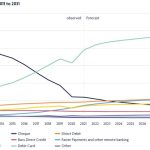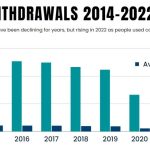New figures from Lloyds Bank claims there has been a huge spike in the use of contactless payments on debit cards rising from 65% in June 2019 to 87% in 2022.

90% of debit transactions contactless
Despite a recent renaissance in its use to combat the cost of living crisis, the move away from cash was accelerated by various lockdown restrictions and social distancing rules, with the contactless limit rising from £30 to £100 by October last year.
Lloyds reported that 93% of restaurant transactions are made in contactless, while 90 and 89% are made in department stores, and health & beauty purchases.
Supermarkets, hardware and clothing are all between 85-80% card over cash, while larger items such as furniture and electrical goods tend to have a lower percentage.
Lloyds says 800,000 debit card customers have set their own contactless spending limits, while 60% have set a limit of under £50, as they move away from cash payments.
Customers are able to lower or raise their limit in £5 increments or leave it on the default setting of £100.
“When the contactless limit increases, our customers will be able to use new tools in our mobile app to switch contactless on and off and also set their own transaction limit,” Lloyds Banking Group’s Philip Robinson says.
“We’ve listened to customer feedback to introduce this option which will allow them to make the most of the £100 limit in a way that works for them.”
“The convenience of a contactless payment is clear when you look at the growth in this type of payment over time, with 87% of face to face debit card transactions now made using the technology,” continues Gabby Collins, payments director at Lloyds Bank.
“We know how important choice is for customers, so our mobile app gives customers the option to set their own contactless limit, as well as turn the option on and off, and we’ve seen around 800,000 customers use the tool since we introduced it in 2021.”





